- 03/02/2021
- 5 Min Read
- By: Christian Schaefer
How To Replace BMW F30 Front Wheel Bearings (BMW F30 xDrive 328i, 330i & More)
A properly functioning wheel bearing is critical to any car, not just the BMW F30. The wheel bearing handles the rotational force of each wheel. Whenever a vehicle is modified, whether it be a lowered suspension or more power, there will be an effect on the wheel bearing's life. As the F30 3-series is a very popular platform for modification, wheel bearing replacements aren't uncommon in this generation. However, the bolt-in style of bearing used on the F30 3-series makes changing them a breeze.
Replacing a front wheel bearing is a perfect DIY job. Major components of the car are disconnected, but their reinstallation process is simple. Sockets and wrenches are what you'll need to take it apart, too; no special tools. Watch the video or read along below to find out exactly how to replace your wheel bearings correctly on the first try.
BMW Models and years applicable:
This DIY applies to numerous BMWs extending further than just the F30. These wheel bearings fit 2-series xDrive models, 3-series xDrive, and 4-series xDrive.
Symptoms of a failing wheel bearing on a BMW F30:
- Humming or grumbling coming from one of the wheels that increases with speed
- Clunking when going over uneven surfaces
- Excess play in the steering
The first thing you'll notice when a bearing is failing is the noise it makes. What starts as a low hum at highway speeds will turn into a howling rumble coming from the corner responsible. The noise comes from the excess play of the rollers inside of the bearing caused by their wear. Eventually, the excess play will lead to clunking and vague steering.
Leaving a wheel bearing to destroy itself is setting yourself up for catastrophic failure. A seized wheel bearing can lock itself completely while you drive down the road, causing you to come to a screeching halt in the very best-case scenario. Your best course of action is to replace the bearing as soon as you possibly can.
How much will it cost to replace the front wheel bearing on a BMW F30 xDrive?
A genuine BMW wheel hub comes in right around $250. On top of that, you'll need four new mounting bolts and a new axle bolt. BMW has updated the wheel bearing, and with it, they changed the mounting bolts. They use a new thread pitch and require a different socket than the original bolts, so they are necessary for a new hub assembly. Set aside $25 for the four mounting bolts and around $15 for the axle bolt. The latter must be changed as it's a one-time use stretch bolt.
Set aside around $300 a corner for the cost of parts. Expect to pay around $1000-$1200 for a pair of front wheel bearing replacements.
How long will it take to replace the front wheel bearing on a BMW F30 xDrive?
Replacing the front wheel bearing on your BMW F30 is a relatively quick process. You have to remove the brakes and unbolt the axle from the knuckle. Beyond that, there isn't much else. With the right tools and a clean workspace, expect to have one side completed in 45 minutes.
The hub and bearing bolt to the knuckle. The ends of their four mounting bolts are exposed to the elements and may develop corrosion depending on where you live. Having a can of penetrant and a MAP gas torch will go a long way for freeing stuck components.
Parts needed to replace the front wheel bearing on a BMW F30 xDrive?
- BMW Wheel Hub Assembly
- BMW Hub Assembly Bolt x4 per corner
- Axle Bolt x1 per corner
Tools needed to replace the front wheel bearing on a BMW F30 xDrive?
- 6mm Hex Bit Socket
- 17mm Hex Bit Socket
- T60 Torx Bit Socket
- TP60 Torx Plus Bit Socket
- 17mm Socket
- 18mm Socket
- Ratchets
- Torque Wrench
- Breaker Bar
- Screwdrivers
Steps needed to replace the front wheel bearing on a BMW F30 xDrive?
Step 1: Remove the brakes
Jack up the front of the car and place it onto jack stands. Then use a 17mm socket to remove the lug bolts.

If you can, have a helper hold the brake pedal down to stop the hub from rotating and allow you to break the axle nut's torque. Otherwise, place a heavy-duty screwdriver through the caliper bracket and into the rotor's vanes to hold the wheel hub. Then, use a 17mm hex bit socket to remove the axle bolt.
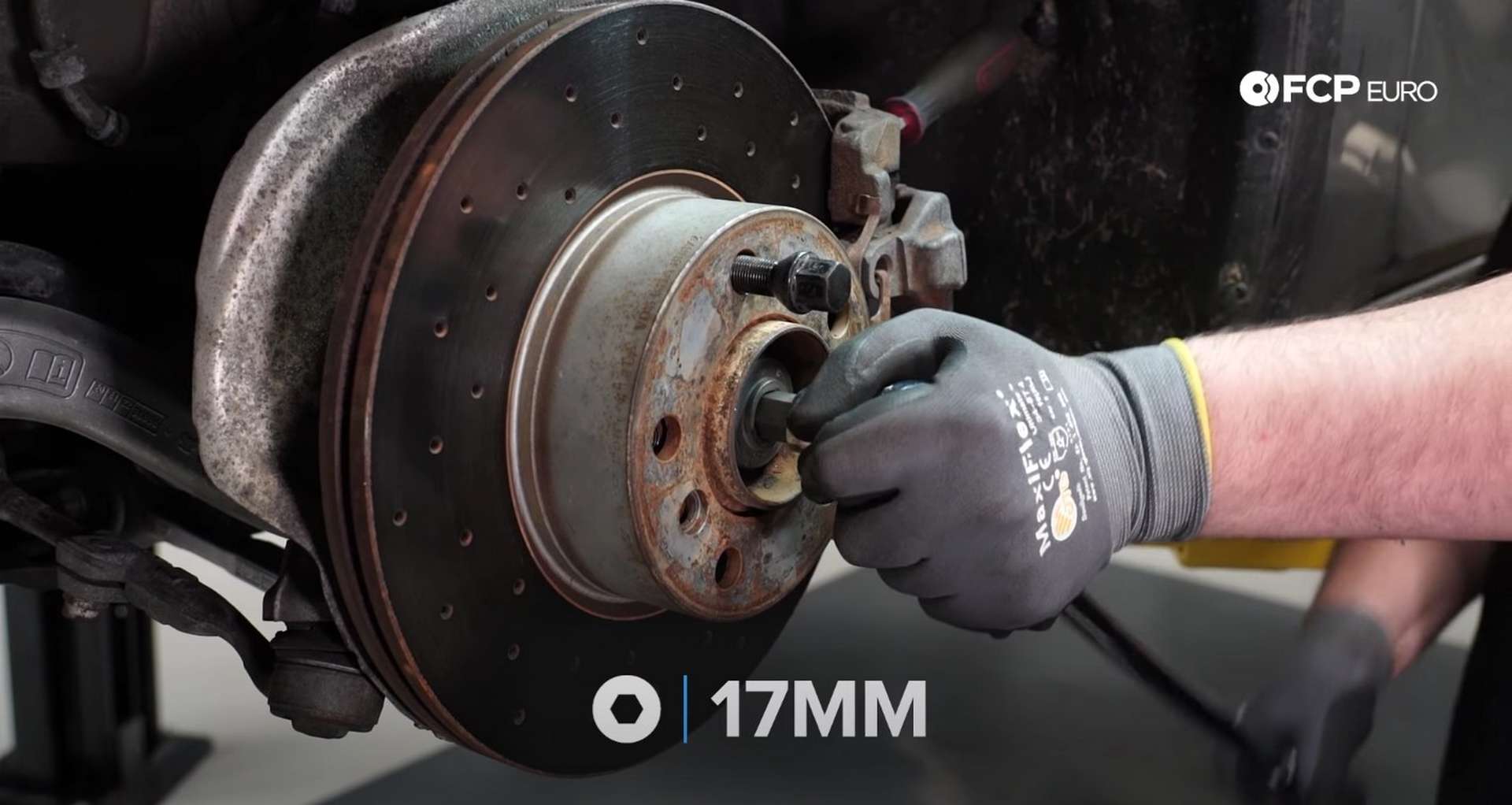
Next, remove the brakes. Start by using a 6mm hex bit socket to remove the set screw from the rotor. These are often subject to corrosion, so it may prove to be a challenge to remove.
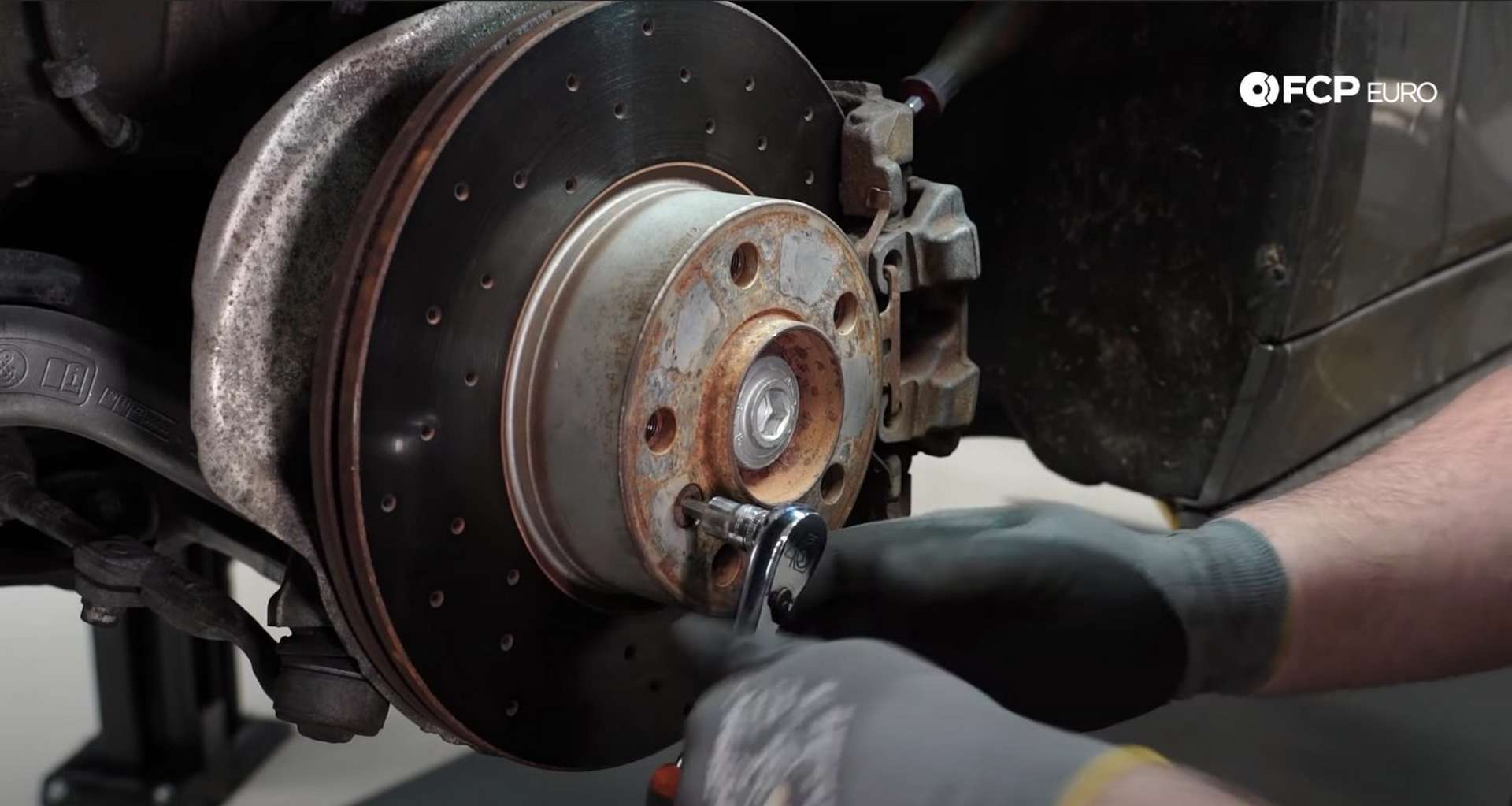
One of the front calipers has a pad wear sensor on it. You can remove the sensor from the pad or disconnect it at the connection on the strut. Then, use an 18mm socket to remove the two caliper bracket bolts from the knuckle. That will separate the caliper from the knuckle, so you'll need some zip-ties or bungee cord to hang the caliper out of the way.
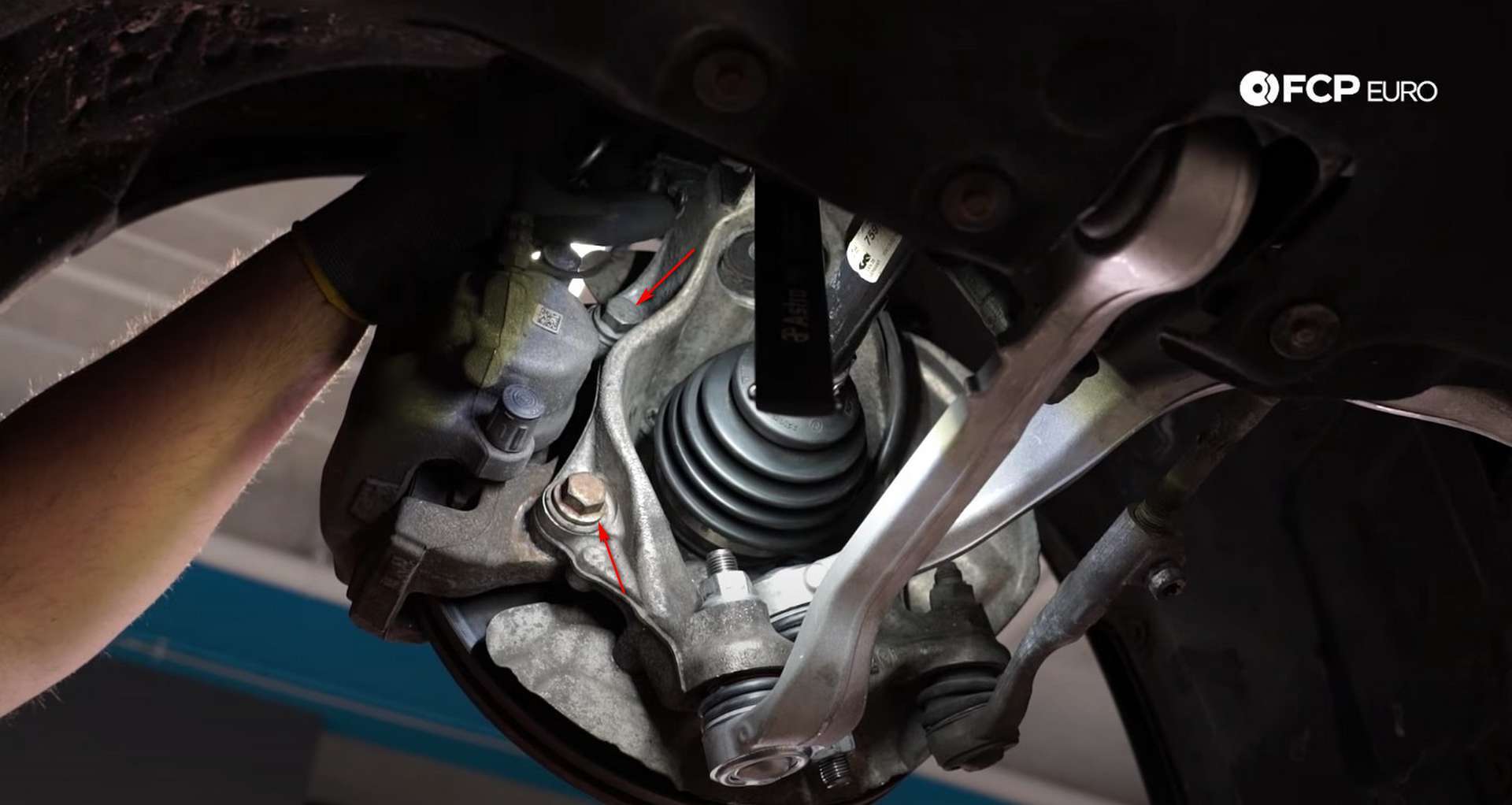
You can pull the rotor off the hub with the caliper out of the way. If the rotor doesn't want to come free of the hub, give the hat a few raps with a hammer. That should be enough to break the corrosion and free the rotor.
Step 2: Replace the wheel bearing
Four bolts secure the hub to the knuckle. The heads of the bolts are on the backside of the knuckle, around the axle boot. If your wheel bearings are original, use a T60 Torx bit socket to remove the bolts. However, BMW updated the bearings and bolts, so if they've been replaced before, use a TP60 Torx Plus bit socket to remove the bolts.
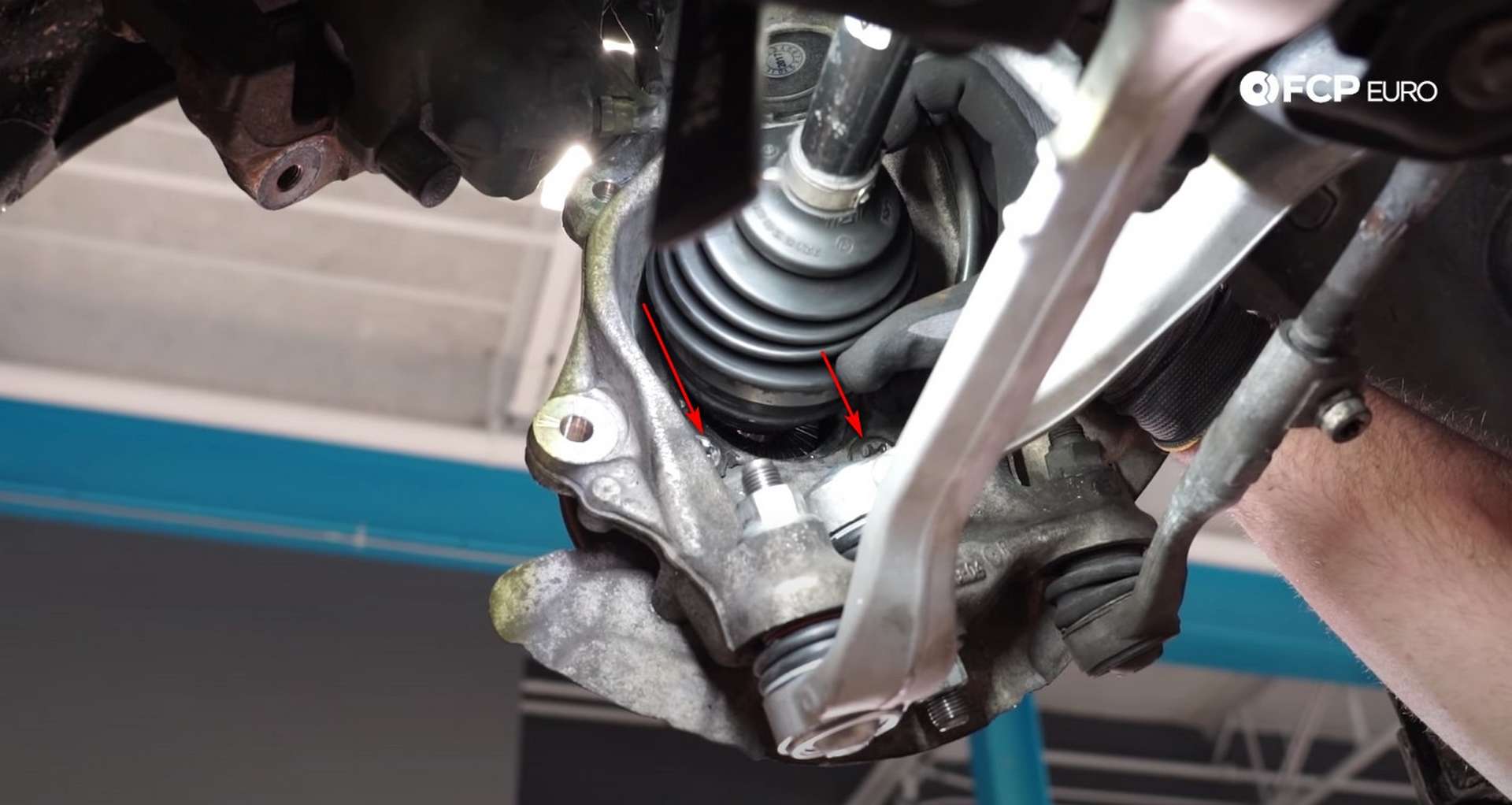

Hold on to the hub while you remove the last bolt to prevent it from falling off the car and injuring you.
Inspect the mating surface on the knuckle for any corrosion. Use brake clean and a stiff-bristled brush or some Scotch-Brite to knock off the corrosion buildup. Then, fit the new hub to the knuckle. Thread in all four of the new bolts by hand before driving them in with the TP60 socket.
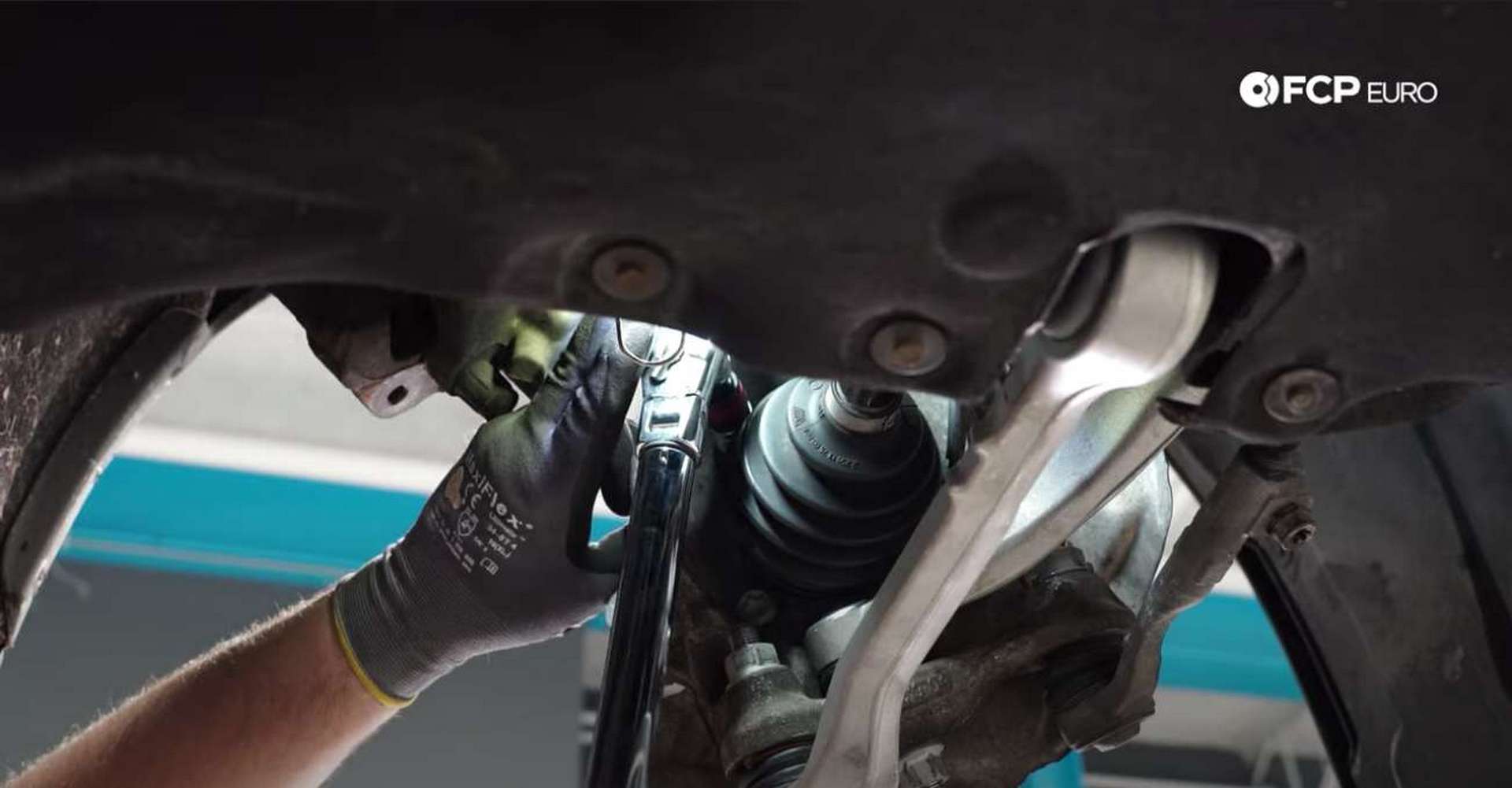
Tighten down all four bolts and then torque them to 80Nm, plus another 90° of rotation.
Step 3: Refit the axle and the brakes
Move the axle back into position in the knuckle and line up the axle's teeth with those on the hub. Rotate the axle and the hub until they move in unison to ensure the teeth are engaged. Then, thread in the new axle bolt.

Ensure that the axle and hub's teeth engage before putting significant torque through the axle bolt. You will destroy the axle and hub if you torque them together incorrectly. Use a 17mm hex bit socket to drive in the bolt. However, don't torque it until the brakes are installed.
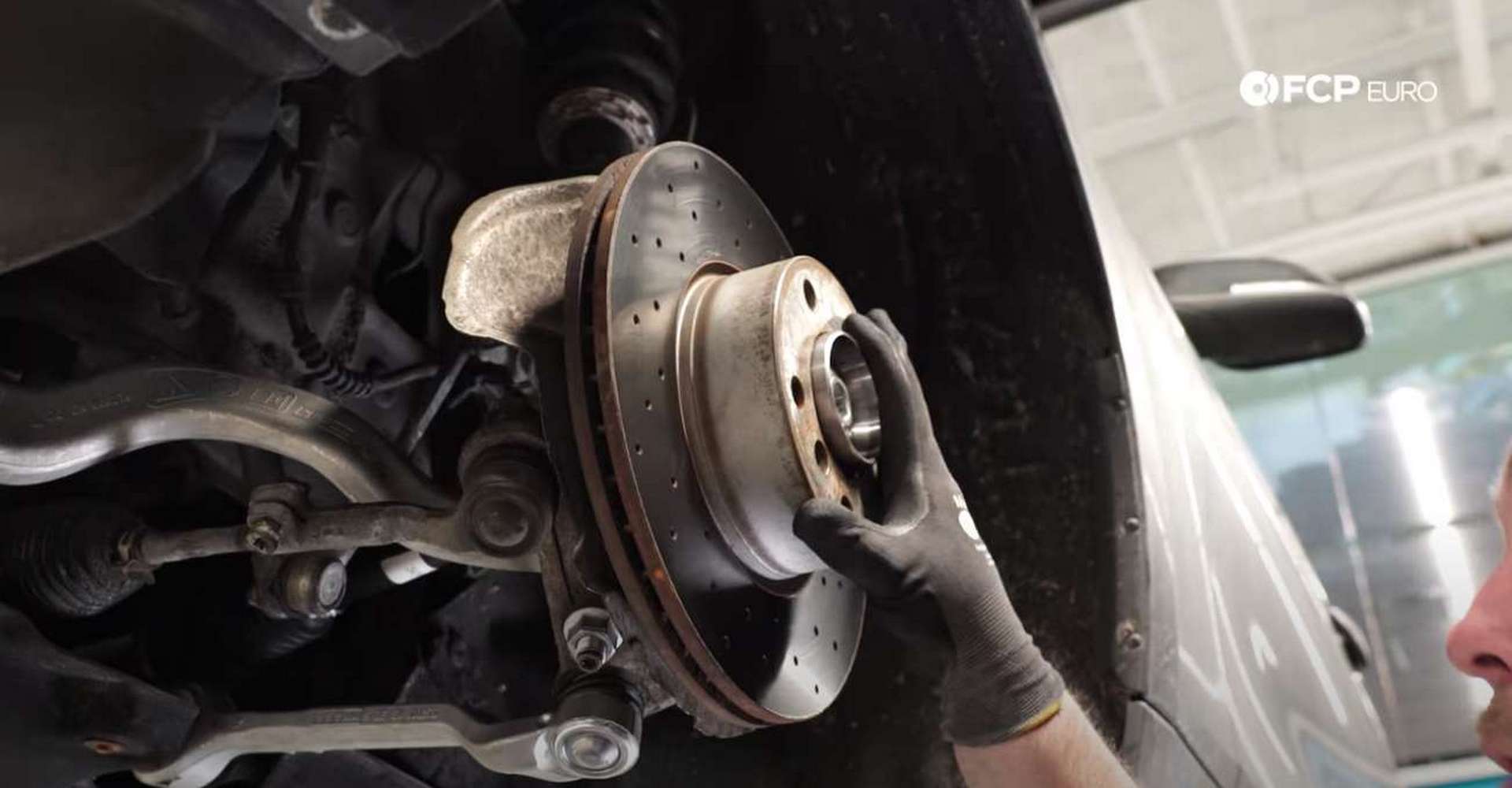
Then, refit the rotor to the hub and secure it with its set screw. Use a 6mm hex bit socket or Allen-wrench to tighten the screw. Then, slide the caliper back into place and thread in its two mounting bolts by hand. After that, torque the bolts to 110Nm with an 18mm socket. Reconnect the pad wear sensor too!
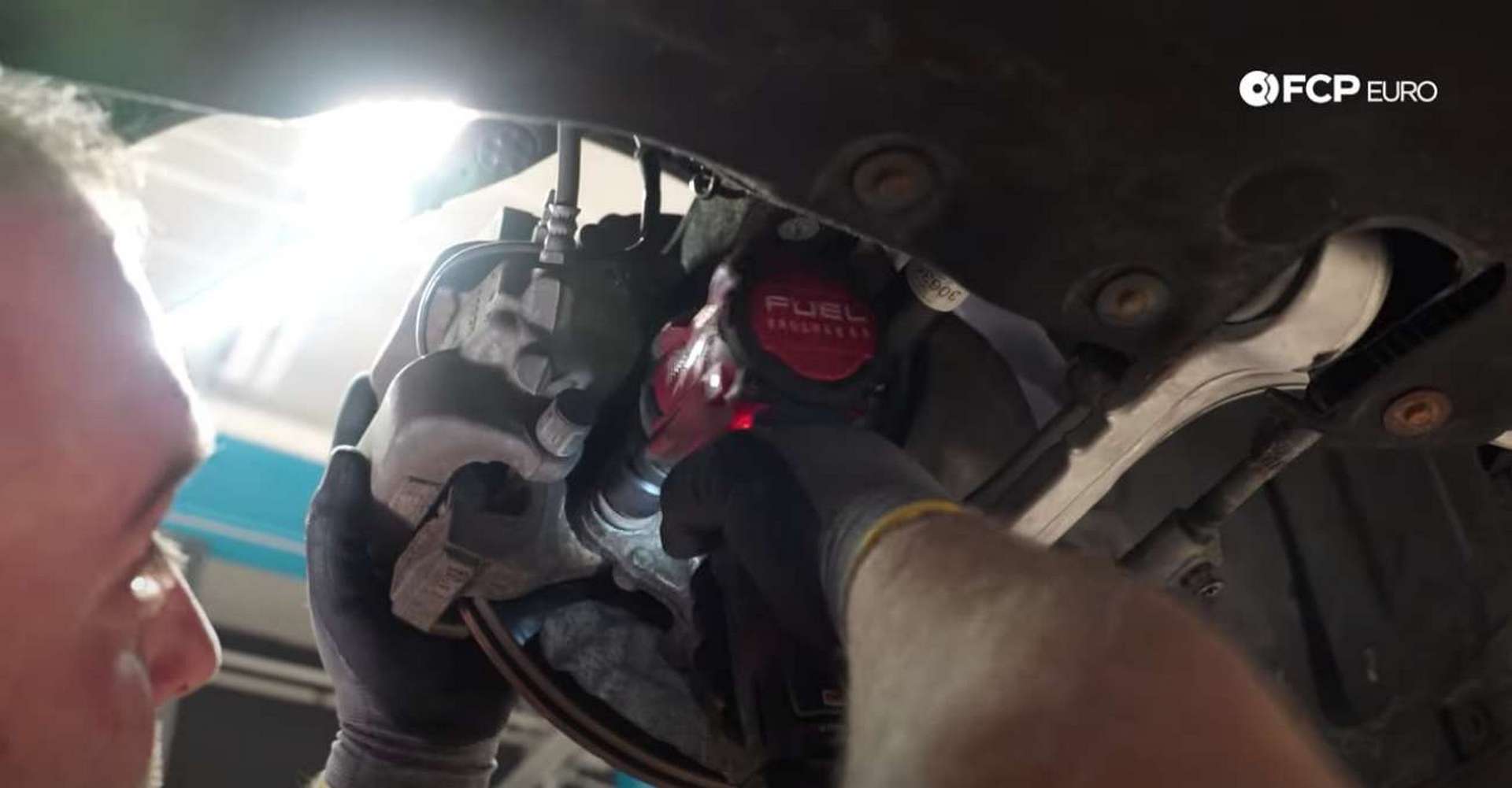
Next, use a 17mm hex bit socket to torque the axle bolt to 210Nm, plus 90° of rotation. If you can, have a helper hold the brake pedal down to stop the hub from rotating and allow you to torque the axle nut. Otherwise, place a heavy-duty screwdriver through the caliper bracket and into the rotor's vanes to hold the wheel hub.
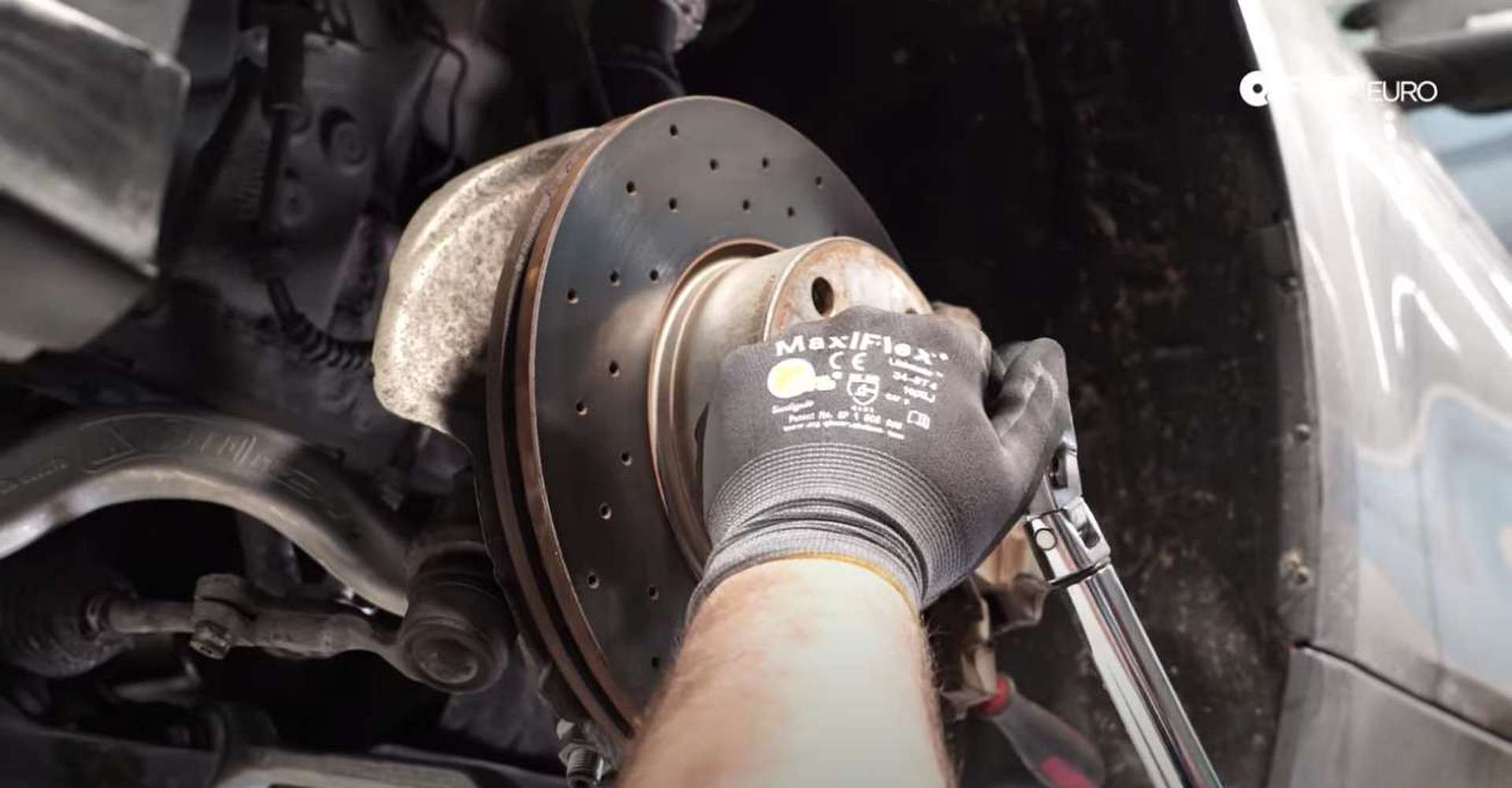
Lastly, refit the wheels and thread in the lug bolts before tightening them with a 17mm socket.
BMW F30 Wheel Bearing Torque Specs:
- BMW Wheel Bearing Bolts = 80Nm or 59 ft-lbs, of torque
- BMW Axle Bolt = 210Nm or 155 ft-lbs, of torque, plus 90°
You're much better off now that your wheel bearing is fresh and ready for another 100,000+ miles. If you're interested in more DIYs for your BMW, you can visit bmw.fcpeuro.com and subscribe to our YouTube channel.











